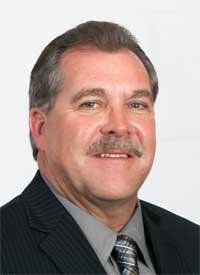Roundtable: How the Data Center Consolidation is Evolving
Today we continue our Data Center Executive Roundtable, a quarterly feature showcasing the insights of thought leaders on the state of the data center industry, and where it is headed. In today’s discussion, our panel of experienced data center executives – Aligned Energy CEO Andrew Schaap, Shay Demmons of RunSmart, FORTRUST COO Robert McClary, and Bob Woolley of RagingWire Data Centers – discuss how the data center business is being affected by the ongoing industry consolidation.
The conversation is moderated by Rich Miller, the founder and editor of Data Center Frontier.
Data Center Frontier: The data center industry saw lots of active M&A activity in the first half of 2017, highlighted by Digital Realty’s acquisition of DuPont Fabros Technology is the sector’s largest deal yet. What’s driving all this consolidation? Is it likely to continue?
ROBERT WOOLLEY. RagingWire Data Centers
Robert Woolley: The data center colocation industry is relatively young, with most people pegging the start at around 1999. Since that time, the industry has seen three waves of mergers and acquisitions – New Entrants, Expansion, and Assets.
The first wave was about New Entrants. Tech companies in adjacent industries would buy a data center start-up as a way to get into the colocation industry. A great example is Exodus Communications, one of the early data center startups, which purchased Global Center in 2000 for $6 billion. After filing for bankruptcy in 2001, Exodus was purchased by Cable and Wireless. Then in 2004, Savvis bought Cable and Wireless America which included Exodus. All the transactions were based on getting into (or out of) the new colocation market.
As the colocation industry matured, the second wave of M&A started around 2010 and was about Expansion. In this wave, we saw Digital Realty buying in the U.S. and Europe, and then Asia. Equinix started buying in Europe, Asia, and Latin America. RagingWire participated in this wave when we joined the NTT Communications family of companies along with Gyron and e-shelter in Europe and Netmagic in India.
The most recent M&A wave has been about Assets. This wave has been marked with the rise of the Real Estate Investment Trust (REIT) and the view of data centers as property assets with a cost basis and a return on investment. The Digital Realty acquisition of DuPont Fabros is largely being viewed as an acquisition of data center assets – 302 megawatts in Northern Virginia, Chicago, and Silicon Valley, plus development opportunities in those sites as well as Toronto and Oregon. The recent acquisition by Equinix of 29 data centers from Verizon fits into this M&A asset wave. The disposition of enterprise data centers such as the CME data center sale to CyrusOne is also part of this wave.[clickToTweet tweet=”Robert Woolley of RagingWire: The most recent data center M&A wave has been about assets.” quote=”Robert Woolley of RagingWire: The most recent data center M&A wave has been about assets.”]
Interestingly a new asset type is emerging in data center M&A – customers. Because of the long term customer contracts that are typical in colocation plus the trend for a customer to grow with their colocation provider, it is possible to assign an asset valuation to individual customers. For example, Digital Realty’s pending acquisition of DuPont Fabros most likely included a valuation for DuPont’s large cloud customers such as Microsoft and Facebook. The Equinix acquisition of the Verizon data centers also included the addition of over 600 net new customers.
Going forward, you can expect the asset model to drive M&A activity. However, as the supply of available high-quality data center real estate and customer assets decreases, we will see valuation multiples increase, but there may be fewer transactions.
ANDREW SCHAAP, Aligned Data Centers
Andrew Schaap: Wall Street has high expectations for the large data center REITs, which have experienced a lot of growth in recent years because the demand for information storage is so high and continues to grow every day. In this highly competitive market, it’s an arms race for these public companies to acquire additional revenue and footprint in order to scale. The consolidation is likely to continue because management has to search smaller and untapped markets that are under-served.
One of the best ways to do this is to acquire other companies who already have a presence in these markets because the barriers of entry and the time and capital it takes to expand footprint is high. In fact, one of the reasons I joined Aligned Energy, which is a privately-held company, is because we have the ability to say “yes” to more opportunities whereas the publicly-traded companies have a more difficult time getting decisions approved and look to acquire in order to expand into new territories.
SHAY DEMMONS, RunSmart
Shay Demmons: The emergence of hyperscale cloud providers has created a ripple. Data centers that historically focused on reliability and availability are now placing a higher priority on the economics. This moves the balance of power away from smaller, custom-built on-premise data centers, to larger players who can leverage their footprint to offer greater flexibility and economies of scale.
Staci Daguanno of iMason shared a similar view, in the blog titled Shifting Power and Shifting Priorities, he writes, “We see data center companies expanding globally through M&A and new construction. The dynamics of the players in the space is changing very rapidly. Data center operators and end users are increasingly prioritizing energy efficiency, TCO, flexibility, and scalability over availability.”
With this shift in priorities, data center operators need a more comprehensive solution to achieve their mandates. Scale will bring some advantages, however monitoring and tracking are no longer good enough. There is a need for greater transparency, tighter control, integration, and automated control automation to drive companies into the future. Otherwise, they too may be swallowed up.
Robert McClary, FORTRUST
Robert McClary: I believe that with the size and scale of the data center industry, and its continued growth, you are going to see consolidation. I think some of the other factors that are driving this are the Internet of Things and the need for more data center capacity globally, and I think edge computing is pushing a higher quantity of data centers that will be located randomly next to population areas.
Both of those things are contributing to a lot of M&A activity, since they affect the strategic thinking of these data center service providers who are trying to prepare for the future of the industry.
NEXT: What’s the outlook for innovation in data center electrical infrastructure?
Keep pace with the fact-moving world of data centers and cloud computing by following us on Twitter and Facebook, connecting with me on LinkedIn, and signing up for our weekly newspaper using the form below:
About the Author




